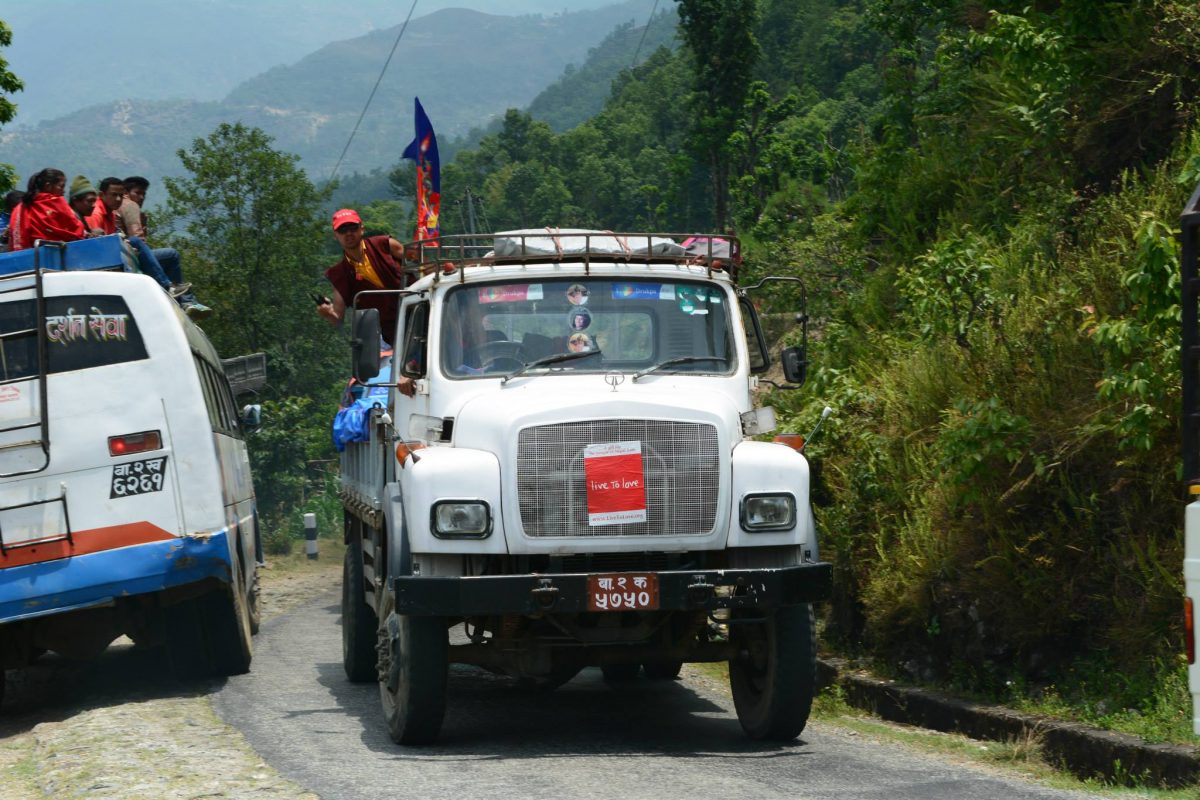Stove Project April 2020
Institutional Cooking in Nepal by Ben Robinson
In 2016 Live to Love sent George Lewis and me on a mission to implement a number of rocket stoves to victims of the 2015 earthquake. The aim was to make life a little easier for those people whose lives had been made so difficult by a natural disaster. The rocket stoves had a great impact but we also noted how there were no appropriate solutions for larger cooking applications. Schools, monasteries, dairy farmers and local businesses had to either pay hundreds if not thousands of dollars for poorly designed solutions or rely on open fires to cook the large quantities of food needed. Over the next year, as part of my mechanical engineering masters degree, I developed an appropriate solution for institutional cooking and in late 2017 we took it to Nepal. Co-financed by Live to Love (UK and International) and the Global Challenges Research Fund (GCRF) we set out to see what we could do with 10 of these cookstoves in various pilot sites.
Three years on, whilst the world is in chaos reeling from the effects of COVID-19, and I am stuck in isolation in Kathmandu, it is time for an update on progress. I have visited the pilot sites a number of times, in 2018, 2019 and over the last few weeks in 2020. There were two basic questions we wanted to answer: first, do institutions influence the way communities cook? And second, is there a sustainable enterprise model for this cookstove?
Both these questions needed time, hence three years of monitoring. Only now are we beginning to see the impact of people integrating these institutional cookstoves into their lives and organisations. Of the ten manufactured, three are still used daily, six at least once a month for religious festivals and one is unfortunately no longer used. When you compare this use to the average it is extraordinarily good. The stoves that are having the biggest impact are in the Kathmandu Valley with a dairy farmer and at a school for mis-treated children.
The dairy farmer uses the stove to cook for his cows, a very Nepali tradition, and due to its high performance it has allowed him to save and expand his farm – drastically increasing his income. The school has integrated the cookstove into their curriculum and it is looked after by the senior pupils; the headmistress regularly has inquiries from the local farmers. The cookstove enables the school to saves hundreds of USDs on cooking gas which is able to pay for more children to attend the school. The other successful sites are above 2500m in Langtang National Park, around 100kms from Kathmandu. High in the Himalayas the water is too cold to touch so the stoves provide an efficient way to heat water for washing people and plates. These stoves are also used to make tea for the religious ceremonies; reducing the amount of firewood needed means less time scrambling in the jungle looking for firewood – an activity that can have deadly consequences. When visiting these sites people are always grateful for the assistance but when asked the difficult question of would you pay for this – a good test of real value to users – the answer is almost always yes.
Back to our research questions: yes, I do think that the institutions that use these cookstoves have affected the views and habits of the community members. Everyone has always heard of the stove and wants to know how they can get one. And second, there is a huge market for this – to start there are 20 million farmers in Nepal all cooking for their cows on an open fire and a government subsidy system that would make it affordable to all socio-economic groups. As well as answering the big questions there have been a number of academic research outcomes; the first is that the data from this pilot has been used to write a research paper that will advise the Nepali Government on the correct steps to create an institutional cooking market (currently under review at Development in Practice). Second, the results of the pilot are so successful that we are writing another paper on how we achieved it – to be submitted very soon!
Finally, I would like to thank Live to Love for all their support over the years and whose hard work and belief in me made this all possible. This project will continue to benefit peoples’ lives for a long time to come!

